Isabel Conway goes exploring the Pantanal in Brazil’s Mato Grosso Region
The magic of exploring Brazil’s Mato Grosso is because it is home to the sprawling Pantanal, the world’s largest wetlands and lofty ancient Chapada dos Guimaraes.
It’s what I imagine the Garden of Eden must look like. Our canoe slides through rippling pristine channels while flashes of multi coloured birdlife flit amid the luxuriant greenery above. Spend half an hour cruising along the waterways of the Pantanal, on horseback or a jeep safari and you soon realize there’s an awful lot of wildlife in Brazil and here is possibly the best spot for admiring it.
Few places on earth I am also about to discover, have such richness of natural beauty either as Mato Grosso region (still off the radar to many foreign tourists flocking to beaches of the vast eastern coast of Brazil, Rio, Salvador and magnificence of the Amazon and Iguazu) which is twice the size of Germany and shelters three eco systems Amazon (rainforest) Pantanal (wetlands) and Cerrado (savannah).
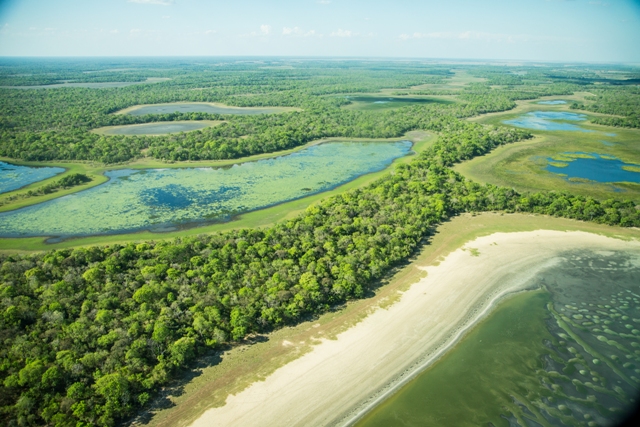
Low lying and seriously off the beaten track in this vast diverse country’s Southwest and bordered by Bolivia and Paraguay, the Pantanal is the largest wetlands on earth where Brazil’s animal and bird life are at their pristine best, says National Geographic and others in the know.
Over 900 miles Northwest of Rio de Janeiro The Pantanal is dead centre of the South American continent, as big as Portugal and more than 20 times the size of Florida’s Everglades so it’s not a place in which you should ever lose your way.
For more than a hundred years low level cattle ranching was the main activity until visiting environmentalists, naturalists, botanists and others with an interest in eco-diversity went “wow”. It’s a fair guess that the Pantanal’s logistical challenges have added to its allure and mystery but now those prepared to pay that much more to view nature that has disappeared elsewhere in the world are waking up to its remote charms.
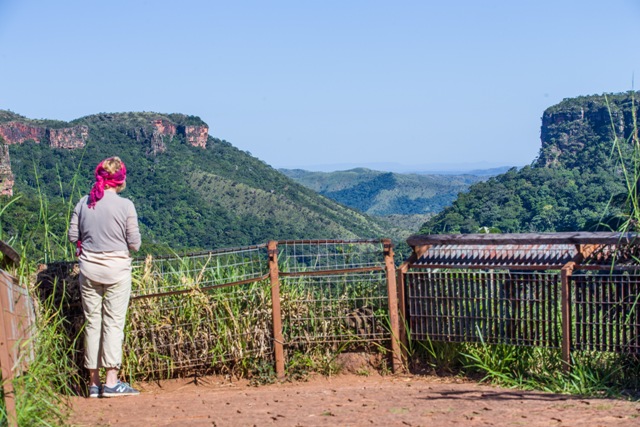
Accessible by one road and under water for almost half the year, we manage to penetrate only a fraction of the Pantanal’s bewildering size from our base at one of a growing number of eco lodges specializing in giving tourists an authentic introduction to its unique beauty.
A few hours north of here at Chapada dos Guimaraes, also within Mato Grosso province a dizzying abundance of birdlife including rainbow hued macaws soaring against a backdrop of spectacular sandstone cliffs and over 450 gushing waterfalls completely wows us too. Keep on travelling and eventually you reach the Amazon.
The first thing that strikes me about the Pantanal is its emptiness of humanity or homesteads as our mini bus clatters over a dusty track spanned by wooden bridges after leaving the gateway town of Pocone with clouds of red dirt rising into the horizon. Here we picked up Tony our fantastic guide, passionate about preserving Brazil’s environment and wildlife who knew the names and cries of every bird in the sky and habitats and habits of all that roamed the forests and swamps.
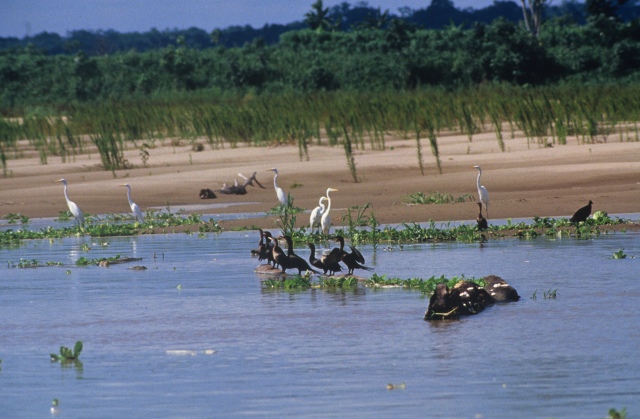
The first news he imparted was a disappointment though “Unless we are incredibly lucky there’s a 90 per cent chance you won’t see a Jaguar because it’s too early (spring) and the best time is from June to September” explained “ so will have to come back to view our most famous creature here”.
“But there’s a fair chance we may get to see the giant anteater or the elusive Brazilian Tapir during our night drive”, he adds. Sadly we saw neither, though a Tapir’s footprints were spotted near a rare pygmy kingfisher and a family of Capybara, the world’s largest rodent, like an obese guinea pig on long legs that can weigh up to ten stone. And the caimans were everywhere, except under my bed.
The Pantanal is home to 650 species of birds, 260 species of fish and 80 species of mammals so we didn’t exactly feel deprived after sightings that included a pygmy king fisher – highly prized among bird watchers among dozens of feathered residents, marsh deer, a crab eating fox and Howler Capuchin and Marmoset monkeys – to name just some of the wildlife.
The first signs of life for many miles after entering the Pantanal were of a cowboy and his young son who were herding white humpbacked Brahman cattle imported from India because of their resilience to the heat and mucky terrain in these parts. So we stopped to watch and take photos of 10 year old Vincento astride a sturdy Pantaneiro horse who was helping his father to separate a calf from the adults because of fears the young beast might fall into a nearby open gold mining hole.
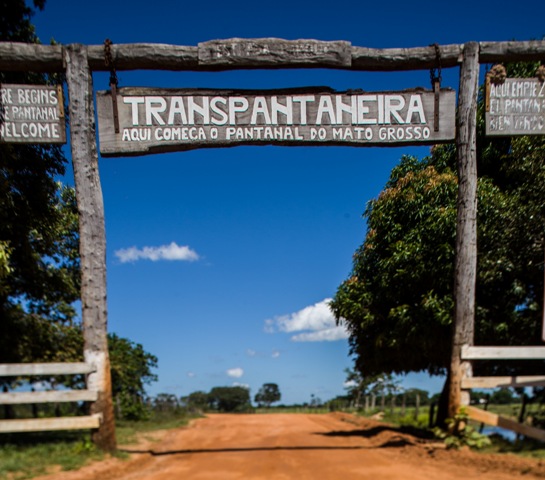
The following day I was riding my own young Pantaneiro horse named Novato (New Kid) plodding through the water in the midst of the Pantanal’s wilderness when a sudden powerful splash disturbed the silence of our meander in a mosaic of swamps watched by placid water buffalo.
A large Caiman had just been scared off by our lead horse, disappearing into the deep before we had a chance to spot more than a flash of scaly tail. These brave horses steadfastly cross streams and bogs alongside lazy gators, at times even lowering their necks and heads deep down to graze on submerged roots. Unlike other horses their lungs are enlarged so they can hold their breath longer under water and their hooves are resilient to foot rot.
Birdlife flitting and grazing around eco- tourism themed Pousada Araras Lodge lying at the end of a rutted track, deep in the Pantanal, included a resident hyacinth macaw named ‘Blue’ who liked sharpening his beak on the shower unit pipes. Hyacinth macaws are extinct in most of the world and dying out in the Pantanal due to poaching.
Conservation efforts have seen a return of these magnificent creatures with their deep blue feathers, long tails and yellow markings around the eyes and beaks that live in the hollows inside native Manduvi trees.
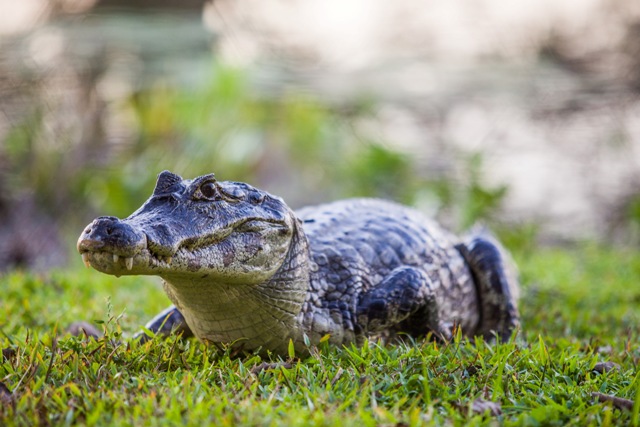
Assorted macaws, different species of egret and ibis, laughing falcon, multi coloured parrots, colossal Jabiru storks and the shaggy plumaged Rhea, an Ostrich cousin that pecked for grubs on the front lawns roamed in glorious harmony around the chaparral style buildings.
At dusk the owners of lovely Pousada Araras lodge environmentalist and farmer Andre von Thuronyi and his wife Akhila offered cocktails coloured orange and red like the twilight sky and guests took a front seat for ‘bird’s happy hour ‘and their return en masse to roost in surrounding trees. Tiger herons, red and blue macaws, roseate spoonbills whose spread wings are capes of flaming cerise joined in the chattering fluttering melee.
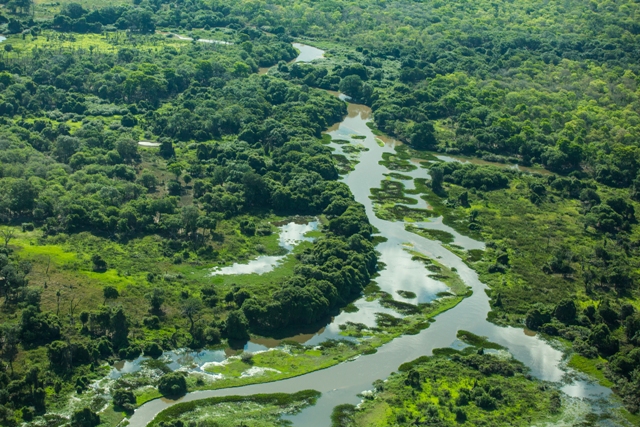
Slow cooked buffalo, roast locally caught golden dorado, various bean dishes and a delicious combination of Okra and Cassava were among the organic dishes served under the stars here washed down with excellent Brazilian beer or homemade lemonade.
Full board and day and night wildlife drives, walks along a wonderful path to a lookout tower to view monkeys and high flying birds, canoe trips, trekking on horseback and fishing for piranha are offered to Araras Eco lodge guests and we packed all of it into a memorable 2 day stay.
In the days that followed exploring Brazil’s Mato Grosso I travelled north to explore a little of huge Chapada dos Guimaraes National Park’s table mountains with incredible views and trails leading to hidden bathing pools north of Mato Grosso’s capitol Cuiaba , one of the main the agri business powerhouses of Brazil. Apart from spectacular its landscapes look forward to warmth and generosity here in unspoilt Mato Grosso. Tourist are made to feel genuinely welcome but take a Portuguese phrase book as communication can be difficult otherwise.
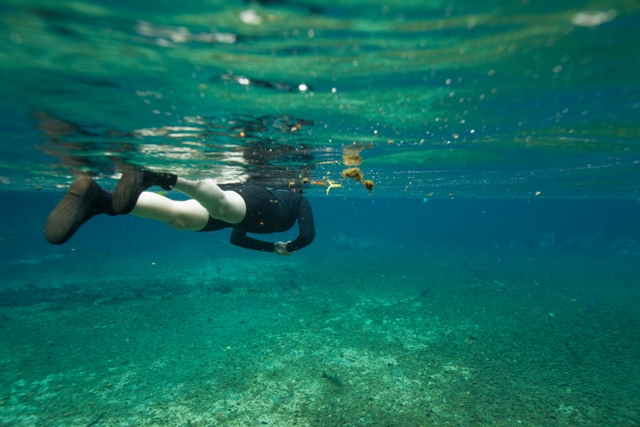
Nobres known for its ancient caves and marine fossils was our last stop off. Here on a lone dawn hunt I tried to spot some of the iconic creatures we had earlier missed and think I caught the rear end of the famous giant anteater in another nature rich enclave called Bom Jardim famous for unusual snorkelling.
Plunging in at the river’s bubbling source I was taken in the current downstream where baby anacondas (the world’s largest snake) miniature sting rays, tiny doctor fish and large numbers of carp swam or lay hidden. Though hardly a match for the mighty Pantanal this magical place showed small can also be beautiful.
All images except Isabel Conway (c) Embratur.
Tell me more about exploring Brazil’s Mato Grosso
Getting There: British Airways, Portuguese National airline TAP and TAM airlines Brazil fly daily from London Heathrow to Sao Paulo. Domestic flights to Cuiaba take a further 2 hours.
For more information about exploring Brazil’s Mato Grosso visit www.visitbrazil.com Passion for Brazil Brazil tour operator specialists and Journey Latin America
Where to Stay In the Pantanal Araras Eco Lodge At Chapada: Funky retro Chateau Camalote, set in lush gardens with a secluded pool, B & B Nobres: Reino Encantado, Bom Jardim reinoencantado.10@hotmail.com
Airport transfers arranged from all accommodation.
Before you travel: Women are strongly advised to avoid becoming pregnant when travelling to areas of Brazil where the Aedes Aegypti mosquitos that spread the Zika virus are prevalent. Summers in the Pantanal are intensely hot. Pack light protective clothing and closed footwear. Intrepid travellers can opt for car hire as rental is not expensive and routes are well marked. Food – good value as long as you avoid wine – targets carnivores. Local beer is excellent and cheap while wine is expensive.

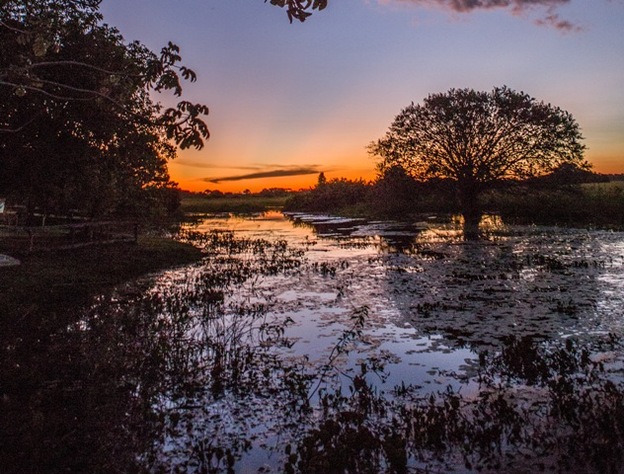
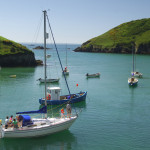

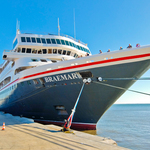
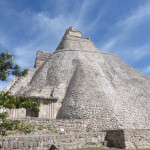

Artigo bem feito e estou feliz em ler seu blog e você compartilhar um conteúdo tão incrível que já estive no Brasil antes.